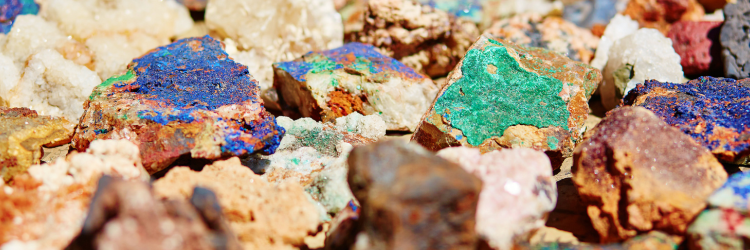The USGS Turns to Quantum Tech
Having switched my major from geology to business, I’m still a sucker for all things USGS. The organization just turned to quantum technology to help with the next generation of geological challenges, establishing a Cooperative Research and Development Agreement (CRADA) with a quantum company called Q-CTRL
The evolving geological challenges include energy transition—the storage of electricity and batteries—as well as the new minerals we want to use that are not plentiful and are often held captive by politics. The USGS wants to improve its ability to detect and assess the minerals in the subsurface.
Quantum’s role would involve the precise measurement of gravity to learn what’s in the subsurface. They can, for example, differentiate a big, dense rock from a lighter, less dense rock beneath the surface. Then, the geometry of that rock body might suggest it is a mineral deposit, and additional tools would indicate which kind. Quantum technology would go far to improve accuracy and use lighter, less bulky, and less costly tools to assay. This is still in the research phase.
The USGS is working with Q-CTRL to explore whether its software and sensors have the capability to get the USGS a much lower cost and a much higher resolution subsurface data. Of course, it’s a cooperative research and development agreement.
Q-CTRL is essentially shining lasers through falling atoms and using diffraction patterns to find the rate at which particular atoms fall. The real challenge is in taking all the noise out, and what happens when you make the instruments a lot smaller and start moving them around? And that’s where all the trigonometry comes in because you have to remove all the accelerations from movement and the inherent noise in the quantum system.
The USGS also wants to work with them on magnetometry, which is essentially measuring the direction and strength of the magnetic field on Earth, looking at how those orientations happen at atomic levels, and getting very accurate readings of direction and magnitude for the little magnetic compass that’s sitting there in Earth’s field.
Eventually, these small, lightweight devices that don’t require a lot of energy could also be used on the Moon or Mars. Finding such things as batteries for a new economy, volatiles on the moon, potentially hazardous faults in the subsurface, and sources of volcanic unrest are all important.
The technology developed will be refined to the point that those who would commercially exploit the existence of these rare earth elements, for example, would have a better idea of where to start looking and digging. The agreement at hand is to test the notion that these technologies will improve our ability to shine a flashlight into the subsurface to find resources and hazards.

